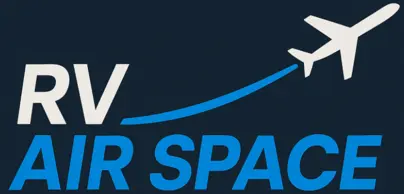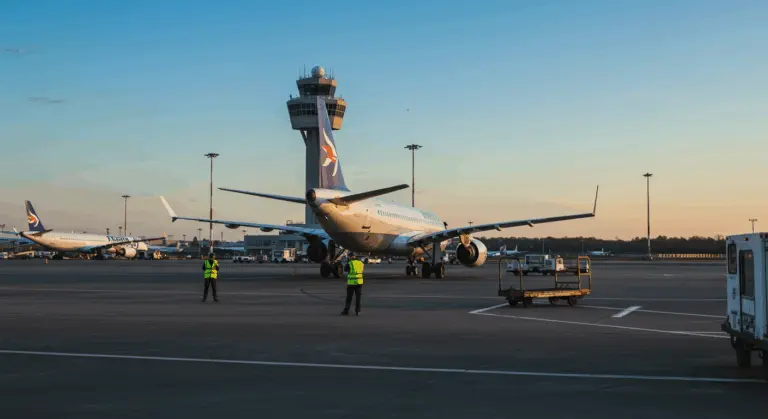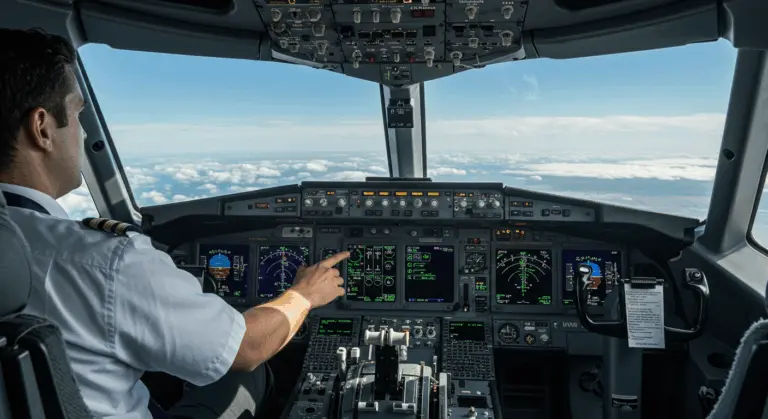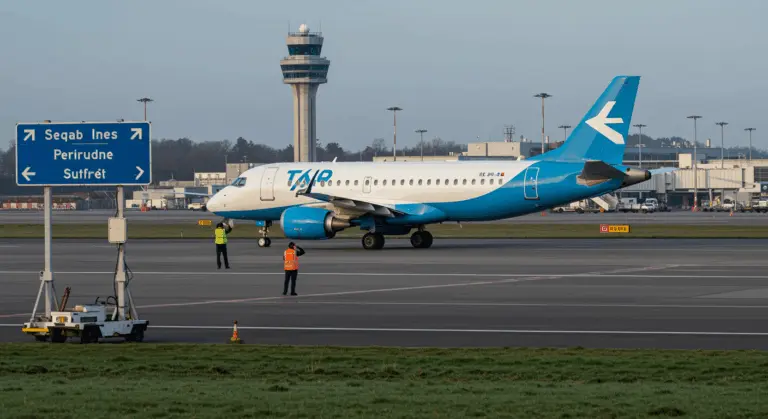Understanding RVSM Altitudes – A Comprehensive Guide
What is RVSM and Its Importance?
RVSM (Reduced Vertical Separation Minimum) represents a pivotal aviation standard that reduces vertical separation between aircraft from 2,000 feet to just 1,000 feet within specific high-altitude ranges. This reduction doubles the number of available flight levels.
The impact on airspace capacity is substantial. Air traffic controllers can now manage more aircraft movements safely, creating smoother traffic flow through even the most congested aerial corridors.
Beyond capacity gains, RVSM delivers clear operational advantages. Aircraft can access more fuel-efficient altitudes, reducing operating costs and emissions. Pilots gain greater flexibility to select flight levels that avoid turbulence—a win for both passenger comfort and safety.
Yet this reduced separation demands strict adherence to equipment standards and operational procedures. This balances airspace efficiency while never compromising flight safety.
RVSM Altitude Ranges and Flight Levels
RVSM operates within a precisely defined vertical band: Flight Level 290 (29,000 feet) through Flight Level 410 (41,000 feet). This airspace represents aviation’s sweet spot—containing the most efficient cruising altitudes for commercial jets, particularly on transcontinental routes.
The mathematics are clear. Within this altitude band, RVSM doubles available cruising levels from seven to thirteen, creating a significant increase in airspace capacity.
The RVSM flight envelope extends far beyond simple altitude boundaries. It includes the complete range of operational parameters within which an aircraft is approved to operate in RVSM airspace. This encompasses Mach number ranges, weight-to-atmospheric pressure ratios, and certified altitude bands where aircraft can maintain requisite navigation performance. This comprehensive approach ensures that aircraft can maintain the precise altitude control necessary for safe operations with reduced vertical separation.
Requirements for Operating in RVSM Airspace
RVSM airspace demands strict standards across equipment, certification, and training—all designed to ensure safety with reduced vertical separation. Aircraft require specially certified altimeters and autopilots capable of maintaining altitude with high precision.
Operators must secure formal RVSM operational approval from their aircraft’s state of registry—a separate validation confirming that equipment specifications and maintenance procedures meet stringent standards.
RVSM qualification demands adherence to strict standards. Group-certified aircraft must share identical design specifications, while all RSM-approved aircraft require specific minimum equipment:
Non-compliant aircraft face strict restrictions, confined to altitudes below FL290 or above FL410. Should they need to transit through RVSM airspace, they must maintain traditional 2,000-foot vertical separation from all traffic.
Contingency Procedures for RVSM Operations
RVSM safety hinges on carefully developed contingency procedures that pilots and controllers must execute when operations fail. Altitude deviations demand immediate corrective action to restore the critical 1,000-foot vertical buffer between aircraft.
Weather presents RVSM’s greatest challenge. Moderate to severe turbulence can trigger unexpected altitude fluctuations that threaten reduced separation standards.
Equipment malfunctions trigger responses calibrated to their severity. Single altitude-keeping system failures may permit continued operations with heightened vigilance.
Rigorous reporting requirements support RVSM safety management. Any altitude deviation exceeding ±300 feet requires formal incident documentation, regardless of traffic conflicts.
RVSM Implementation Across Regions
RVSM’s global implementation between 1997 and 2005 transformed international airspace management. This systematic rollout commenced in the North Atlantic and systematically expanded across major aviation corridors worldwide.
The United States embraced RVSM in January 2005. Today, it governs domestic U.S. airspace, Alaska, and FAA-controlled regions including the Gulf of Mexico, San Juan FIR, and oceanic airspace spanning the Atlantic and Pacific.
ICAO’s frameworks now permit RVSM application across all Flight Information Regions globally. This standardization has proven crucial for maintaining safety while greatly increasing airspace capacity.
Exemptions and Special Cases in RVSM
Though RVSM regulations are strictly enforced, certain situations demand specific exemptions to accommodate operational realities. These precisely defined exceptions ensure essential aviation activities continue without compromising RVSM system integrity.
Four primary categories of aircraft may receive exemptions from RVSM requirements:
-
Aircraft on delivery flights: Aircraft being delivered to the state of registry or operator.
-
Aircraft requiring maintenance: Previously approved aircraft being ferried to a maintenance facility after an equipment failure.
-
Humanitarian or mercy flights: Operations responding to time-critical emergencies, such as medical or disaster relief.
-
Aircraft with special configurations: A regional exemption for aircraft transporting externally mounted spare engines within specific Firs (Oakland, Anchorage, and Arctic).
All exemptions require specific procedures: advance ATC coordination, heightened vigilance, and often special routing or timing restrictions to minimize interaction with regular RVSM traffic. This approach balances operational flexibility with the paramount safety standards that make RVSM viable.
Understanding RVSM Phraseology and Communication
In RVSM airspace, where aircraft operate with merely 1,000 feet of vertical separation, communication is essential. Aviation authorities have established standardized phraseology that pilots and controllers must use consistently throughout all RVSM operations.
RVSM entry requires clear approval status declarations. Pilots must state “AFFIRM RSM” to confirm compliance or “NEGATIVE RSM” if non-compliant.
Flight level assignments demand precise read backs and prompt reporting upon reaching assigned altitudes. For example: “LEVEL FLIGHT LEVEL THREE FIVE ZERO” eliminates any ambiguity.
Altitude deviations require immediate reporting using standard phrases like “UNABLE TO MAINTAIN FLIGHT LEVEL DUE TO TURBULENCE,” enabling rapid ATC response.
Equipment failures affecting RVSM capability demand the declaration “NEGATIVE RSM DUE EQUIPMENT,” prompting controllers to issue separation-ensuring instructions.
RVSM operations require precise communication. Even minor ambiguities can create safety risks. All altitude-related incidents require prompt reporting using standard phraseology to maintain system integrity and support ongoing safety analysis.







